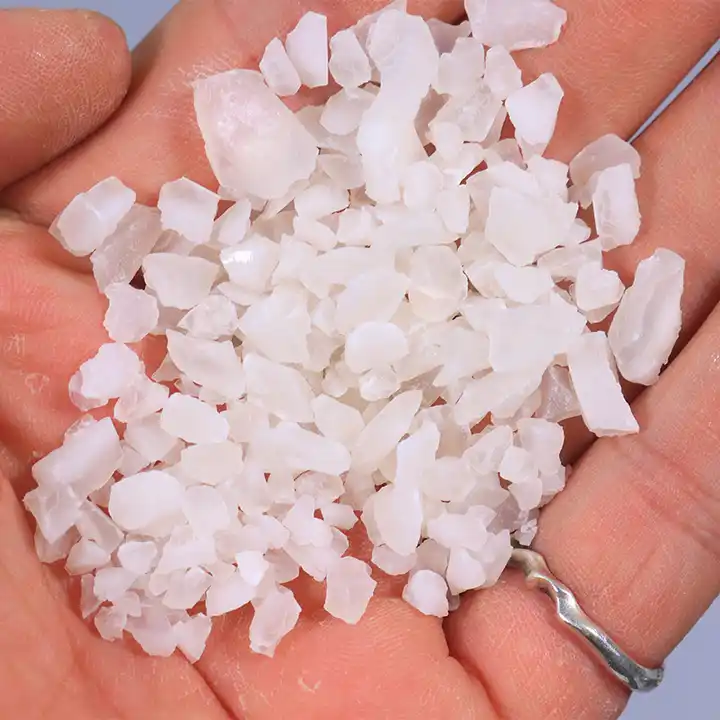Flocculants play a crucial role in maintaining clean water in swimming pools. In the treatment of swimming pool water, flocculants aggregate suspended particles, making them larger, which enhances filtration and cleaning. Therefore, swimming pool management and maintenance personnel must familiarize themselves with various types of flocculants to achieve optimal results. This article primarily introduces several commonly used flocculants in swimming pools to help readers choose the right ones and ensure the transparency of swimming pool water.
There are many types of flocculants, which can be categorized into two groups based on their chemical composition: inorganic and organic. Currently, the water quality of swimming pools is primarily controlled by inorganic flocculants, with a minimal use of organic flocculants.

I. Aluminum Sulfate Flocculant
Aluminum sulfate is a commonly used flocculant available in solid and liquid forms. Solid aluminum sulfate, including refined and coarse varieties, is commonly used. The hydrolysis reaction is slow, and it is suitable for temperatures between 20-40°C.
Refined aluminum sulfate is a white crystalline substance containing 50-52% anhydrous aluminum sulfate, about 15% AL2O3, and a specific gravity of 1.62. While impurity content is minimal, generally less than 0.5%, it comes at a relatively higher cost. On the other hand, crude aluminum sulfate has a lower cost but produces more waste in practical applications.
Aluminum sulfate exhibits good flocculation effects between pH 6.5-7.2. However, it hydrolyzes slowly under low-temperature conditions and is highly corrosive under acidic conditions. Therefore, careful consideration of water quality conditions, temperature, and specific treatment requirements is essential for achieving the best flocculation effect.
II. Alum
Alum’s coagulation properties are similar to aluminum sulfate, with a better flocculation effect. It effectively aggregates suspended particles, aiding in the formation of larger flocs during water treatment.
A relatively larger dosage is usually required when using alum to achieve the desired flocculation effect. However, excessive dosage may lead to a drop in pH, causing corrosion issues. Therefore, precise control of alum dosage is crucial to avoid adverse effects.
III. Polyaluminum Chloride
Polyaluminum chloride is a type of flocculant widely used in water treatment. It exhibits good adaptability to raw water environments, excellent flocculation performance in various water quality conditions, and high efficiency with a smaller dosage, reducing treatment costs. During the flocculation process, it features rapidity and large particle size, facilitating subsequent precipitation and sorting.
Polyaluminum chloride also demonstrates strong adaptability, achieving a good flocculation effect in a wide pH range and suitability for various water quality requirements. As a new type of inorganic macromolecular substance, its molecular structure plays a vital role in forming floccules.
In summary, polyaluminum chloride is an effective flocculant in water treatment, effectively improving water quality and purifying water bodies, providing reliable support for the water treatment process.
IV. Polyaluminum Sulfate
Polyaluminum sulfate has similar coagulation performance to polyaluminum chloride and exhibits a better flocculation effect. Notably, it features good decolorization, fluoride removal, and high turbidity water removal functions.
Polymeric aluminum sulfate not only effectively flocculates but also demonstrates strong color removal performance, enhancing water quality transparency. Additionally, it shows better fluoride removal performance, providing a more comprehensive water treatment function.
Moreover, the treated water has a low residual aluminum content, ensuring good water quality filterability. This means that during the flocculation process, polyaluminum sulfate not only aggregates suspended solids effectively to form flocs but also facilitates subsequent filtration steps, further improving water quality purification.
By understanding various types of flocculants in swimming pools, we can respond more flexibly to various water quality problems and enhance the efficiency of swimming pool water quality management. When choosing a flocculant, it is essential to consider the specific conditions of the swimming pool and water quality requirements. Through the scientific and reasonable use of flocculants, we can create a clear and healthy water environment for the swimming pool, providing visitors with a more pleasant swimming experience.
